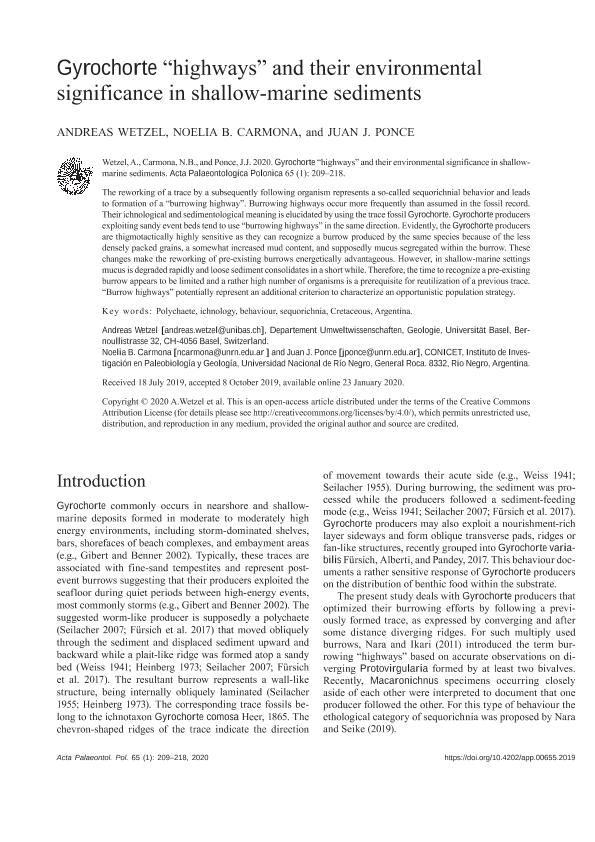Artículo
Gyrochorte "highways" and their environmental significance in shallow-marine sediments
Fecha de publicación:
01/2020
Editorial:
Polish Academy of Sciences. Institute of Paleobiology
Revista:
Acta Palaeontologica Polonica
ISSN:
0567-7920
e-ISSN:
1732-2421
Idioma:
Inglés
Tipo de recurso:
Artículo publicado
Clasificación temática:
Resumen
The reworking of a trace by a subsequently following organism represents a so-called sequorichnial behavior and leads to formation of a “burrowing highway”. Burrowing highways occur more frequently than assumed in the fossil record. Their ichnological and sedimentological meaning is elucidated by using the trace fossil Gyrochorte. Gyrochorte producers exploiting sandy event beds tend to use “burrowing highways” in the same direction. Evidently, the Gyrochorte producers are thigmotactically highly sensitive as they can recognize a burrow produced by the same species because of the less densely packed grains, a somewhat increased mud content, and supposedly mucus segregated within the burrow. These changes make the reworking of pre-existing burrows energetically advantageous. However, in shallow-marine settings mucus is degraded rapidly and loose sediment consolidates in a short while. Therefore, the time to recognize a pre-existing burrow appears to be limited and a rather high number of organisms is a prerequisite for reutilization of a previous trace. “Burrow highways” potentially represent an additional criterion to characterize an opportunistic population strategy
Palabras clave:
Polychaete
,
ichnology
,
behaviour
,
sequorichnia
,
Cretaceous
,
Argentina
Archivos asociados
Licencia
Identificadores
Colecciones
Articulos(IIPG)
Articulos de INSTITUTO DE INVESTIGACION EN PALEOBIOLOGIA Y GEOLOGIA
Articulos de INSTITUTO DE INVESTIGACION EN PALEOBIOLOGIA Y GEOLOGIA
Citación
Wetzel, Andreas; Carmona, Noelia Beatriz; Ponce, Juan Jose; Gyrochorte "highways" and their environmental significance in shallow-marine sediments; Polish Academy of Sciences. Institute of Paleobiology; Acta Palaeontologica Polonica; 65; 1; 1-2020; 209-218
Compartir
Altmétricas




